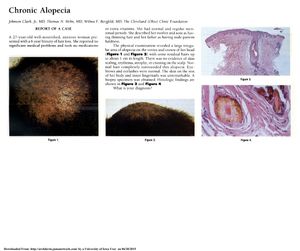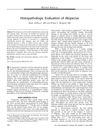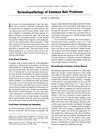Chronic Alopecia: A Case of Trichotillomania in a 27-Year-Old Woman
June 1995
in “
Archives of Dermatology
”
chronic alopecia trichotillomania anagen-telogen ratio catagen hairs pigment casts hair granulomata behavioral interventions antidepressant medications tricyclic antidepressants hair loss hair pulling disorder hair growth cycle hair shedding phase hair pigment deposits hair nodules behavior therapy antidepressants TCAs

TLDR A woman's hair loss was due to trichotillomania, which is often misdiagnosed and can require different treatments based on age and underlying conditions.
The document reports a case of a 27-year-old woman with a 6-year history of hair loss, who was diagnosed with trichotillomania, a condition characterized by the irresistible urge to pluck out one's hair. The diagnosis was supported by histopathologic findings from a scalp biopsy, which showed a reversal of the anagen-telogen ratio, an increased number of catagen hairs, pigment casts within a follicle, and several hair granulomata. Trichotillomania can mimic other forms of hair loss and is challenging to diagnose as patients may deny hair plucking. It is more common in females, particularly girls aged 11 to 17 years. Treatment can be difficult, with children being more responsive to behavioral interventions, while adults may require antidepressant medications, especially if there is an underlying psychiatric disorder. The document also discusses the use of tricyclic antidepressants and the need for caution in certain patient populations due to potential side effects.




